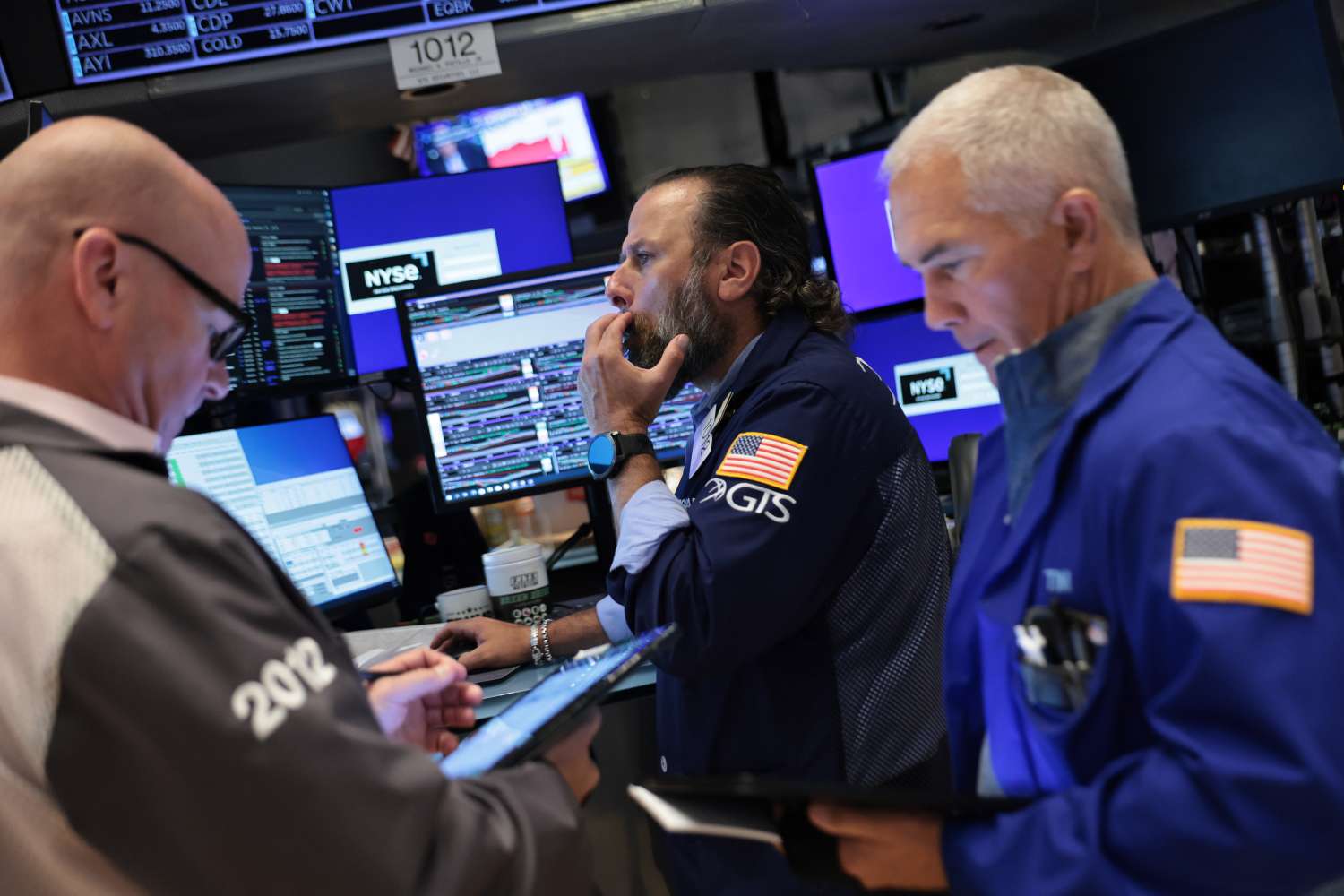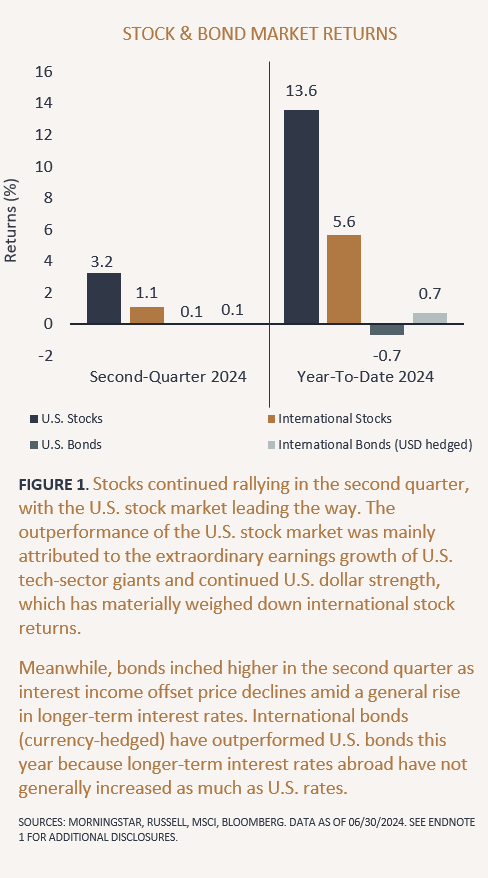1. Liberation Day Shockwave: Tariff Announcements Unleash Panic
On April 2, 2025, President Trump announced sweeping “reciprocal” tariffs—10% on all imports, with steeper rates targeting goods from China, the EU, and other countries—as part of a broad trade escalation dubbed “Liberation Day.” This policy triggered immediate fear in markets and initiated one of the sharpest drops since 2020.
Over the next two trading days, the S&P 500 plunged nearly 4.9%, the Nasdaq collapsed 6%, and the Dow fell over 3%. The moves wiped out approximately $3–6 trillion in U.S. market value in just 48 hours.
Underlying Concerns:
- Investors feared a global trade war, disrupting supply chains and escalating corporate cost structures.
- Bond markets reacted violently—yields spiked as investors sold both stocks and Treasurys, exhibiting bond market “vigilantism”.
- In response, major U.S. indices briefly entered correction and bear market territory, with the Russell 2000 marking a classic trigger point.
2. Macro Shock: Economic & Sentiment Fallout
The crash coincided with an unexpected 0.3% contraction in Q1 GDP, driven in part by a 41% surge in imports as consumers and businesses front-loaded purchases ahead of tariff enforcement.
Inflation expectations spiked—combined with cooling business sentiment and wage pressures to create a risk that market optimism would unwind amid rising costs and weakening demand.
3. Recovery Begins: Policy Recalibration & Market Relief
On April 9, markets reversed sharply after the administration announced a 90‑day pause on the reciprocal tariffs—excluding just China. The news triggered a 9.5% one‑day surge in the S&P, marking one of the largest daily advances in over a decade.
Investor confidence rose further with reports of tariff de-escalation with key partners like the U.K. and Switzerland. Corporations finding Q1 earnings resilient (nearly 86% of S&P 500 firms beat expectations) added to stabilization.
By mid‑May, the S&P 500 had fully regained its losses; by June 27, both the S&P and Nasdaq closed at fresh all-time highs.
4. Why Markets Rebounded So Swiftly
A. The “TACO Trade” Narrative
Investors increasingly relied on the belief that President Trump tends to roll back extreme policy moves when markets react (TACO: Trump Always Chickens Out). This reduced uncertainty and stabilized sentiment.
B. Strong Earnings and Labor Stability
Despite turmoil, the labor market added jobs, and corporate earnings largely exceeded expectations—creating a contrast between policy-related fears and fundamentals.
C. Monetary Policy Reassurances
Markets believed the Federal Reserve would cut rates later in 2025 as inflation pressures eased, cushioning the macro outlook. Fed signals of a possible September cut bolstered equity valuations.
D. Retail Investors and Rebound Purchasing
Retail traders aggressively adopted “buy the dip” strategies, injecting hundreds of billions in equity flows and helping magnets like the Nasdaq outperform with over 30% gains year‑to‑date.
5. After the Shock: Market Structure and Volatility
Narrow Leadership & High Valuations
Post‑rebound, market breadth remained narrow: only around 50% of S&P 500 stocks traded above their 200‑day moving average—well below thresholds for a broad-based rally. Mega-cap tech outperformed, raising concern that valuations were overstretched.
Sector Rotation
While tech initially led gains, by early Q3, cyclicals like financials, materials, and energy began contributing meaningful performance—signaling expanding participation and improved sentiment.
Lingering Macro Risks
Tariff renewal was postponed to August 1, but threats remained. Rising oil prices, geopolitical tensions, and inflation spikes remained potential triggers for volatility.
6. Gauging Historical Context: A Fast Recovery
Compared to major market crises, this recovery was extraordinarily quick:
- Historical market crashes—like those in 1929, 1987, and 2020—took months or even years to recover. By contrast, the April 2025 crash reversed fully in under four months, the fastest rebound in over 150 years.
7. Implications and Key Lessons for Investors
Policy Sensitivity & Market Psychology
Markets remain highly sensitive to trade policy headlines—but the pattern shows extreme volatility often meets quick reversal. Discounting rhetoric while focusing on monetary and corporate fundamentals helped cushion sentiment.
Valuation Caution & Breadth Signals
High P/E ratios and narrow market breadth spotlighted susceptibility to policy shocks. Diversification beyond tech and mega-cap names remains critical.
Retail Influence
Retail capital flows—now measured in hundreds of billions—can rapidly accelerate recoveries but may also amplify drawdowns in turbulent periods.
Macroeconomic Indicators Over Policy Noise
Markets responded more to inflation, GDP data, and labor trends than tariff talk. Investors benefited by paying attention to fundamentals beyond the headlines.
Summary Table: April 2025 Crash & Recovery at a Glance
| Phase | Trigger & Dates | Market Moves |
|---|---|---|
| Liberation Day Shock | April 2: Tariff announcement | S&P -4.9%; Nasdaq -6%; Dow -3%; ~$3–6T lost |
| Stabilization Pressure | April 3–8 | Rising bond yields, recession concerns |
| Tariff Pause & Relief | April 9 | S&P surges ~9.5%; bond yields recover |
| Rebound & Policy Rollbacks | April to mid-May | Market regains losses; broad stabilization |
| Record Highs | Late June | S&P and Nasdaq reach new all-time levels |
Conclusion: From Panic to Performance
The April 2025 crash was entirely policy-driven—triggered by aggressive tariff announcements and the immediate impact on investor sentiment. Yet markets rebounded swiftly as the administration backed off, earnings remained strong, and monetary easing appeared on the horizon.
Still, the episode underscores vulnerabilities: excessive concentration in tech, high valuations, and narrow breadth increase exposure to shocks. While the speed of recovery was encouraging, it came at the expense of volatility. For investors, the lessons are clear:
- Monitor policy headlines—but don’t panic,
- Value diversification and fundamentals,
- Trust in proven strategies like dollar-cost averaging,
- And recognize that even record rallies can hinge on fragile sentiment.






Leave a Reply